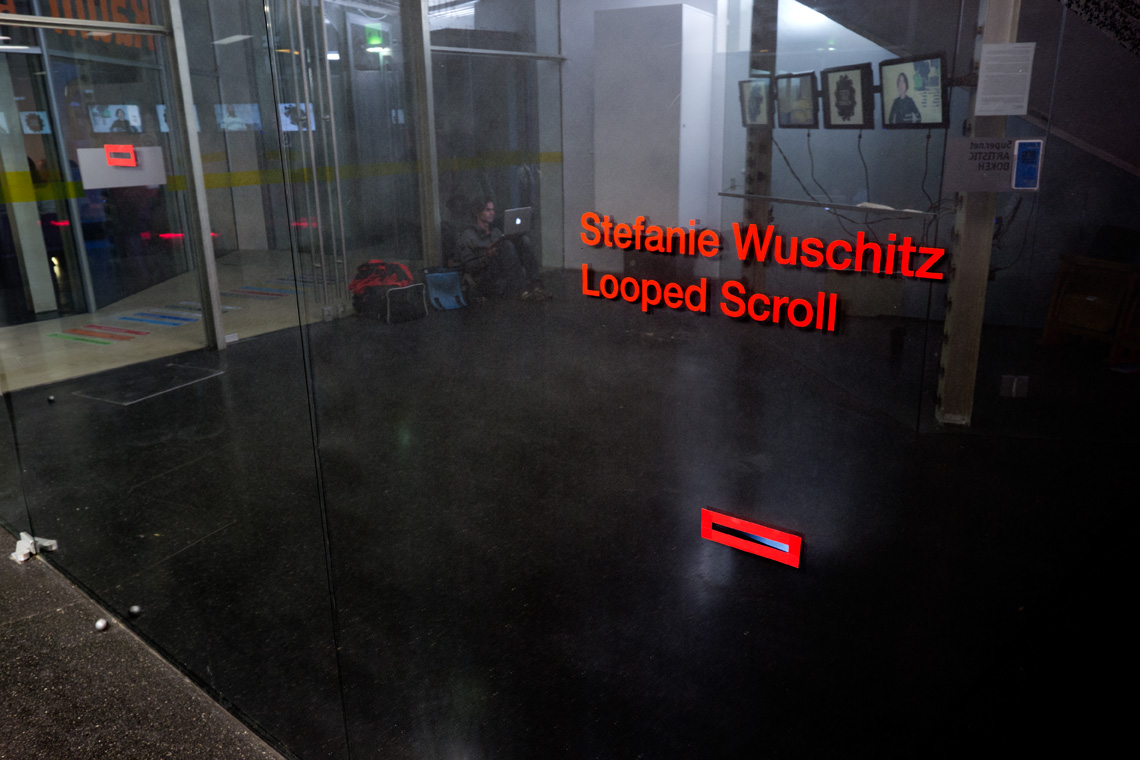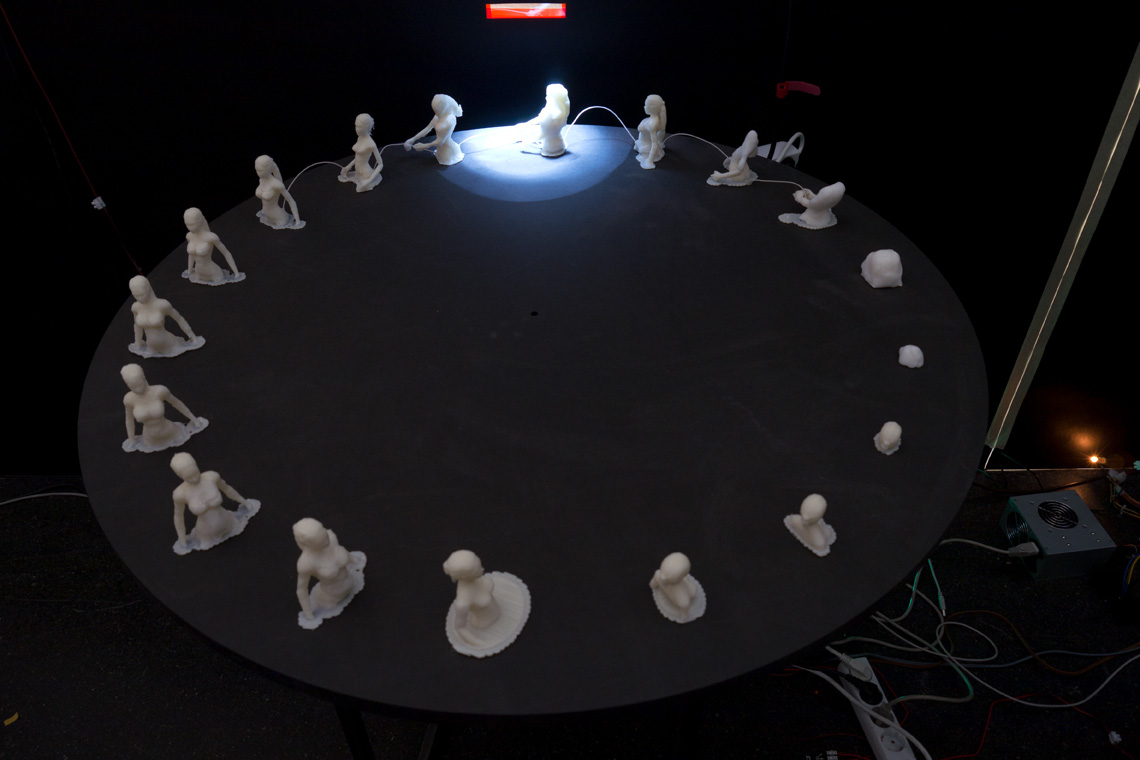LOOPED SCROLL
︎︎︎ CLICK HERE FOR VIDEO DOCUMENTATION
Video von Faksimile, Kainz
SCHAURAUM Angewandte
Kategorie: Zoetrope
Material: 3 Scheibenwischer-Motoren, 3 Licht Sensoren, 54 mit 3D Printer ausgedruckte
Figuren mit Plaast Granulat nachbearbeitet, 3 Stroboskope
Enstehungsjahr: 2012
Ausstellung von Stefanie Wuschitz
(Technische Unterstützung: Christoph Freidhöfer)
Die Installation Looped Scroll bezieht sich auf die 1975 von Carolee Schneemann vorgenommene Performance Interior Scroll. Das Zoetrop (Wundertrommel) zeigt einen Ausschnitt daraus. Das in der Installation hörbare Gespräch mit Carolee Schneemann hat Stefanie Wuschitz im September 2010 geführt. Junge österreichische Medienkünstlerinnen scheinen heute mit ähnlichen Konditionen konfrontiert zu sein, wie die 1939 in Pennsylvania geborene Medienkünstlerin Schneemann. Die Animation repliziert nun die radikale Geste der 68er Generation in modellhafter, verniedlichter Form. Mit der Beharrlichkeit einer Gebetsmühle wird ihre Geste für die nächsten siebenunddreißig Jahre automatisiert.
/
The installation Looped Scroll relates to the performance Interior Scroll by Carolee Schneemann from 1975. The Zoetrope shows a particular part of it. The sound for the installation is taken from a conversation Carolee Schneemann and Stefanie Wuschitz held in September 2010. Although 1939 Pennsylvania born media artist Carolee Schneemann produced this work in 1975, today, thirty-seven years later, young Austrian female media artists seem to be confronted with similar conditions. The animation replicates the radical gesture of her generation in a model like trivialized form. With the persistence of a prayer wheel the gesture will be automated until it ceases to be needed.








COPYRIGHT WITH FAKSIMILE DIGITAL (Kainz)
SCHAURAUM_konzept
WEBSITE DIGITAL ART DEPARTMENT
DIGITAL – ANALOG
To create each of the 18 figures on each of the 3 round plates I used parts of 3D models I downloaded from the Open Source Community Website “thingiverse.com“.
This website is a new phenomenon of people sharing their ideas and concepts in order to create their own objects with self-made DIY 3D printers, called e.g. maker bot, ultimaker, raprap. I’m really interested in this collaborative platform and it’s generousity and openess. I printed out parts of modells I found on thingiverse on a MakerBot.
It’s a challenging new media form to create art work that has not been explored exhaustively yet, since makerbots are still something you would rather find in a hackerspace than an art studio. This made me curious. After printing out the 3D models I had downloaded and manipulated, I used a certain plastic to manually sculpture the printed figures in a way that seemed to be more inspiring.
Through the addition of plastic (plaast granulat) I could make the sculptures exactly as smooth as I needed them to become in order to later simulate a kind of morphing movement. The maker bot is limited when it comes to smooth and organic forms, since it can only print one level after the next, no bearing out.
This is how I made the small sculptures, a mixtue of open source 3D model, Cinema 4D tinkering, 3D printing and later manual manipulation of the sculptures with plaast granulat.
May 24, 2012





